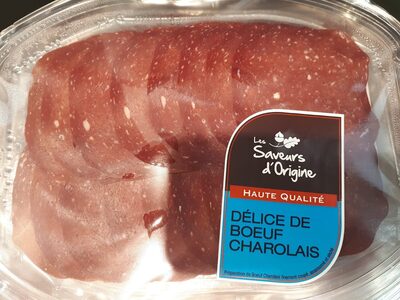Délice de boeuf charolais - Les Saveurs d'Origine - 100 g
This product page is not complete. You can help to complete it by editing it and adding more data from the photos we have, or by taking more photos using the app for Android or iPhone/iPad. Thank you!
×
Barcode: 8010153005960 (EAN / EAN-13)
Common name: Préparation de Boeuf Charolais finement coupé, assaisonné et séché
Quantity: 100 g
Packaging: fr:Barquette plastique
Brands: Les Saveurs d'Origine
Categories: Meats and their products, Beef and its products, Meals, Meats, Beef, Meals with meat, Beef dishes, Beef carpaccio
Labels, certifications, awards: fr:Race-charolaise
Manufacturing or processing places: Italie
Traceability code: IT R3WSF CE
Countries where sold: France
Matching with your preferences
Environment
Packaging
Transportation
Report a problem
Data sources
Product added on by kiliweb
Last edit of product page on by laurehu.
Product page also edited by big-brother, openfoodfacts-contributors, packbot, yuka.V3IwNURZODlvZE5YdXNFUDV4YlEvK3RwMXFYMGMwS0tBUFV0SVE9PQ.











